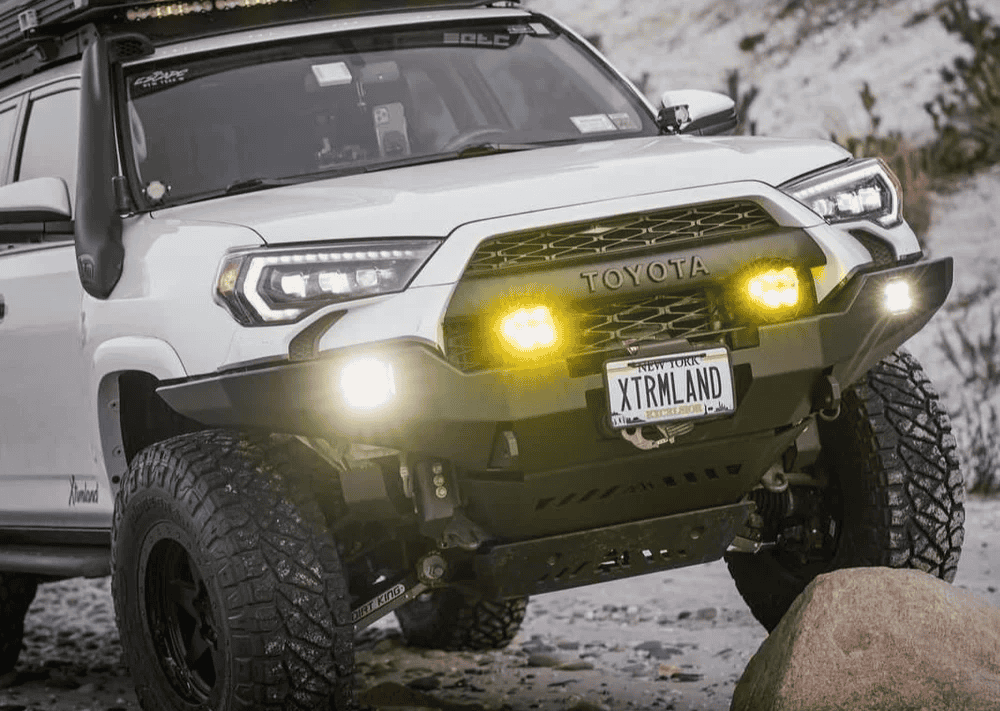Overland Vehicles

Before comparing parts, define the job your rig must do. List the terrain you will actually drive, the seasons you will face, and the range between resupplies. A mountain trail weekend, a desert crossing, and a multi state family trip call for very different loadouts. When you quantify the trip style, you stop guessing and start selecting.
Trim the vision into three hard numbers. Payload, daily energy demand, and water capacity. Payload governs everything, from spring rates to braking. Energy demand guides battery size, solar surface area, alternator charging, and wire gauge. Water capacity sets the tank form factor, pump sizing, and where weight will sit inside the wheelbase.
Weight distribution matters as much as total weight. Keep mass low and near the middle to protect handling, braking, and tire life. Roof loads increase body roll and wind drag, which reduces range and stresses joints and mounts. Heavy storage on the far rear magnifies pitching and hurts traction on steep climbs. Plan storage with gravity in mind.
Add up the weight of people, fuel, water, tools, food, and all major components. Compare this to gross vehicle weight rating and axle ratings. Use a scale before and after major changes so you are managing facts, not estimates. Then calculate range. In remote zones, fuel or charge stops can be rare, which means recovery gear, spares, and maintenance tools are not optional. A little redundancy beats a long walk out.
Tires are the foundation. Choose a size that fits within fender clearance at full articulation. Pick a carcass and tread that suit your terrain while considering road noise, wet grip, and winter performance. All terrain tread is a smart default for mixed use. Mud focused tread shines in deep clay but can give up wet pavement manners. Reinforced sidewalls help on rocky ground but add weight.
Suspension should control weight, not mask it. Select springs for your true running weight, not an empty shell. Quality dampers improve ride, traction, and body control over washboards and loaded highways. Add bump stops or progressive jounce control when payload is high to protect the chassis. Brakes must match mass and wheel size. Larger tires can lengthen stopping distances. Consider upgraded pads, rotors, and stainless lines for consistent pedal feel under heat.
Armor and protection prevent trip ending damage. Skid plates, rock sliders, and smartly designed bumpers protect critical systems. Choose parts that distribute loads into factory structures and offer recovery points tested for real force. Recovery gear should be simple and proven. A rated soft shackle, a couple of kinetic ropes, traction boards, and a reliable jack will solve most stuck situations when used with safe technique.
Match tire pressure to terrain and load. Air down for soft surfaces to increase the contact patch and ride quality, then air up for pavement. An onboard compressor with a proper air hose makes this practical. Lockers, limited slip, or traction control tuning can further improve control in uneven terrain. Stability comes from balanced springs, good damping, and correct alignment, not from towering ride height.
Power systems should be measured, not guessed. List every device, its power draw, and daily use time. Convert to watt hours and size the battery plus charging sources to meet that demand with margin. A mix of alternator charging, roof solar, and shore charging covers most use cases. Proper fusing, wire gauge, and ventilation are non negotiable. A clean electrical plan prevents nuisance faults and protects the vehicle.
Water and heat management dictate comfort and safety. A simple tank with secure mounts, a reliable pump, and food grade plumbing goes a long way. Filter at the source and at the tap when your routes include backcountry fills. For climate, consider ventilation first. Shade, airflow, and insulation reduce cooling demands. In cold climates, sealed combustion heaters offer efficient heat while preserving batteries.
Storage should be modular and secure. Use tiedown points, l track, and cabinets that lock closed. Keep heavy tools on the floor, near the center. Roof racks are best reserved for light, bulky items like spare bedding or traction boards. Every mount should survive corrugations without loosening, so use thread locker and proper torque values.
Compatibility makes or breaks a build. Verify fitment for your specific platform and wheelbase, test for clearance at full stuff and full lock, and protect lines and harnesses after installation. Shake down the rig on local trails before big trips. Carry spares that match your unique build, like belt sizes, fuses, and specific fasteners. Keep documentation of wiring and torque specs in the glove box for quick fixes far from home.
Choosing parts is only half the equation. The real win is how those parts work together. If you want a build that drives like a factory vehicle yet performs in harsh conditions, look for a team that designs around your load, your travel style, and your platform. Explore Overland rigs by OZK Customs to see how thoughtful component pairing turns plans into capability. When you are ready for a professionally engineered system that respects vehicle ratings and keeps serviceability front and center, review our Custom overland upfit services. Curious about process, craftsmanship, and customer experience from first call to handoff? Start here: Why choose OZK Customs.
We build complete adventure vans and overland rigs, tune suspension for real world loads, install power systems the right way, and fabricate protection that preserves your investment. Tell us where you roam, the gear you carry, and the comfort level you expect. We will translate that into a balanced, reliable setup that feels right on the highway and calm when the pavement ends.
Ready to map a capable, reliable build? Tell us how you travel, where you go, and what you carry. Our team will engineer a tailored overland upfit that balances safety, comfort, and performance. Fill out the form and let OZK Customs turn your checklist into a road proven rig.
ADDRESS:
6159 E Huntsville Rd, Fayetteville, AR 72701
PHONE:
(479) 326-9200
EMAIL:
info@ozkvans.com